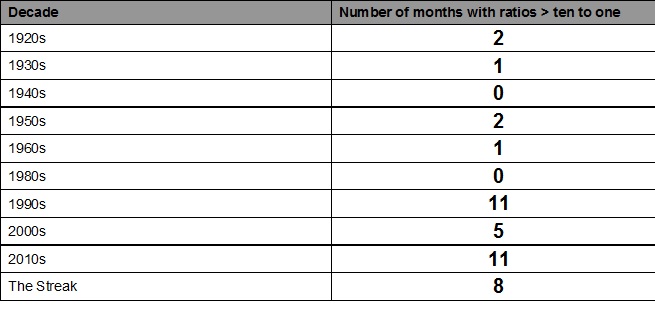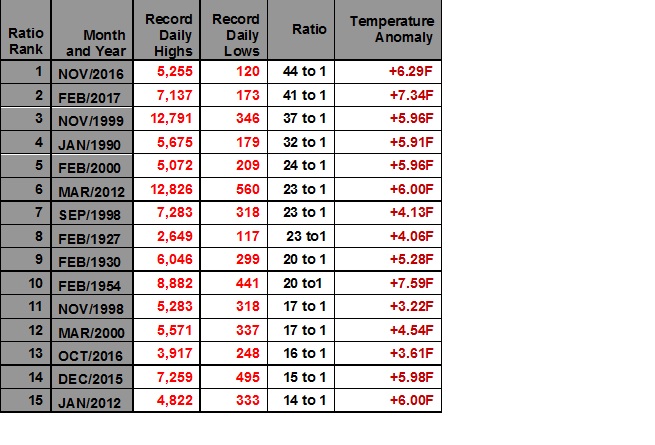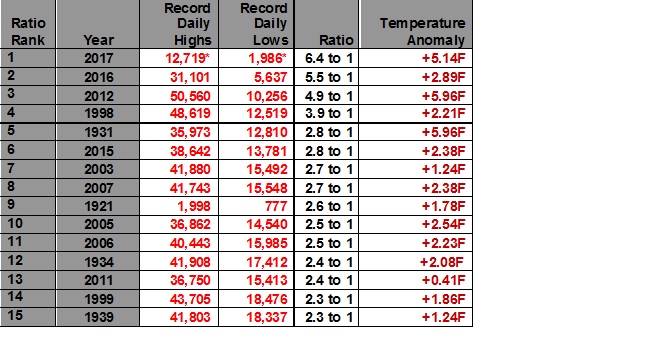In my last post I showed that the current streak of 28 months of more daily record highs than daily record lows in the National Center for Environmental Information database for the United States was also in association with the latest warmest 12, 24, 36, 48, and 60 month periods going back from March 2017 since 1895 here:
https://guyonclimate.com/2017/04/09/streaking-past-a-tipping-point/
This post will delve into a few more toasty tid-bits of information concerning what I will just refer to as “the streak” (from December 2014 to the present). As a reminder, in the Records Genome (a part of which is shown below showing the streak) each tally is one set temperature record, which could be established as a tie or one set by several degrees. Purposefully, I have highlighted in my Records Genome months in bold type that had at least a 10 to 1 ratio of record DHMX to DLMN. Ratios of more than 10 to 1 are rare since 1920, but have become more common during this warm streak across the U.S., which can be linked to carbon pollution:

As shown, during the streak there have been 8 instances of 10 to 1 ratios so far. Why is keeping track of this important? Because summer months of 10 to 1 ratios would more than likely have brutal heat waves and associated droughts. Obviously, the higher the ratio, the hotter the month. I’ll go on record stating that the United States will be lucky not to see a bad heat wave this year looking at temperature trends.
The number of 10 to 1 months during the streak is impressive compared to prior months and decades since 1920:

Eight of the eleven months this decade of ratios greater than 10 to 1 have occurred during the streak. I’ve updated my table of ratio ranks. Yesterday enough daily record lows came into the NCEI system to demote February 2017 to the number two spot:

Four out of the 15 months from the above chart are part of the streak including the two most highly ranked months.
I’ve added another chart for yearly ranked ratios of DHMX’s to DLMN’s. So far, after 3 1/2 months, somewhat alarmingly, 2017 comes in at number one on the list of fifteen highest ranked years since 1920. *There will be many more records set in 2017. The top two years were part of the streak as well as 2015, which get’s ranked sixth. Only four years out of the top fifteen presented here were prior to 1998. Yipes!

That’s about it for “the streak”. It looks like April 2017 will become part of the streak looking at model ensembles forecasting the warm weather pattern to continue. We will revisit these wonky statistics again in early May. My posts, so far, have been rather pessimistic as far as climate change goes. I’ll have a post that is more optimistic next time.
The Climate Guy
One thought on “Streak Dissection”